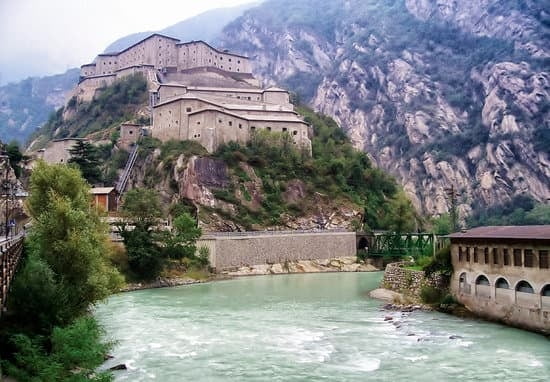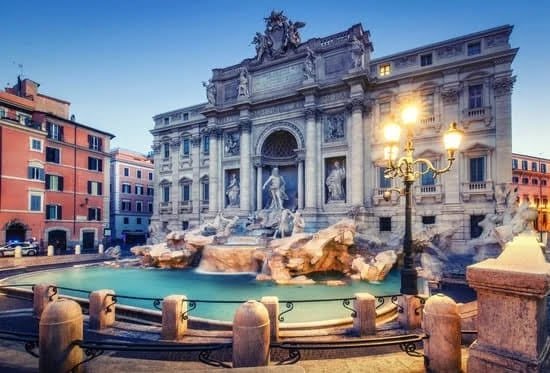How do people and ideas travel around in Italy? Italy, with its rich cultural heritage and intellectual legacy, has long been a hub of travel and exchange. From the historical roots of the Roman Empire to the geographical diversity of its regions, Italy’s influence on travel and ideas is profound. In this article, we will explore the various aspects that contribute to the dynamic landscape of cultural and intellectual exchange in Italy.
One cannot discuss the cultural and intellectual landscape of Italy without acknowledging its historical significance. The country’s history is marked by a legacy of trade, conquest, and artistic achievement that has shaped its identity as a center for cultural and intellectual exchange. From the Roman Empire to the Renaissance, Italy has been a beacon for innovation and creativity, attracting travelers from far and wide.
The geographical diversity of Italy also plays a significant role in shaping travel and ideas within the country. From the northern regions with their bustling cities to the picturesque landscapes of the south, each region offers a unique experience that influences not only how people travel within Italy but also how ideas are exchanged. Join us as we delve into these fascinating dynamics that define the cultural and intellectual landscape of Italy.
The Historical Roots of Travel and Exchange in Italy
The history of Italy is deeply intertwined with the concept of travel and exchange, dating back to ancient times. From the Roman Empire to the Renaissance, Italy has been a hub for cultural, intellectual, and commercial activities, attracting people from all over the world. This historical section will delve into the roots of travel and exchange in Italy, highlighting their impact on shaping the country’s cultural and intellectual landscape.
1. The Roman Empire: One cannot discuss the historical roots of travel and exchange in Italy without acknowledging the immense influence of the Roman Empire. As one of the most powerful civilizations in history, the Romans built an extensive network of roads and bridges that connected their vast empire. These infrastructure developments not only facilitated trade and commerce but also allowed people and ideas to traverse across different regions, contributing to a rich tapestry of cultural exchange.
2. The Renaissance: Another pivotal period in Italian history that significantly shaped travel and exchange is the Renaissance. This cultural movement heralded remarkable advancements in art, literature, science, and philosophy, attracting scholars and artists from across Europe to Italian city-states such as Florence, Venice, and Rome. The free flow of intellectuals and creative thinkers during this period sparked a profound cross-pollination of ideas, giving rise to groundbreaking innovations that continue to influence modern society.
3. Legacy: The legacy of these historical periods continues to reverberate in Italy’s contemporary cultural and intellectual scene.
The enduring impact of ancient Roman infrastructure can be seen in modern transport networks, while the spirit of artistic innovation from the Renaissance era permeates through Italy’s thriving arts and academic communities. As such, understanding how people and ideas traveled around Italy during these formative periods provides invaluable insights into the nation’s vibrant tapestry of culture and thought.
Ultimately, appreciating Italy’s historical roots of travel and exchange allows us to gain a deeper understanding of its current cultural dynamics while illustrating how deeply ingrained these concepts are within its society. Their prevalence showcases an enduring tradition that continues to shape modern-day Italy as a dynamic hub for cultural exploration and intellectual discourse.
From North to South
Italy’s geographical diversity plays a significant role in the travel and exchange of ideas throughout the country. From the majestic Alps in the north to the sun-drenched beaches of the south, Italy’s varied landscapes have influenced not only how people move within the country but also how ideas have circulated over centuries. The diverse terrain has led to distinct regional cultures and traditions, each contributing to the rich tapestry of Italian identity.
The Alps in northern Italy not only provide breathtaking scenery, but they also act as a natural barrier that has historically shaped travel and communication within the region. In contrast, the fertile plains of northern Italy facilitated trade and cultural exchange with neighboring countries.
Moving south, the Apennine Mountains cut through the center of Italy, creating a physical divide that has influenced regional differences in language, cuisine, and customs. The unique geography of Sicily and Sardinia further adds to Italy’s diverse cultural landscape.
In addition to physical geography, Italy’s coastline has also played a vital role in shaping travel and facilitating cultural exchange. With major ports such as Genoa, Venice, and Naples serving as gateways to the Mediterranean, these cities have long been hubs for maritime trade and interaction with other civilizations. The influence of Greek, Roman, Arabic, and other Mediterranean cultures is evident in various aspects of Italian life – from architecture and art to language and cuisine.
| Geographical Feature | Influence on Travel and Ideas |
|---|---|
| The Alps | Natural barrier but also facilitated trade |
| Apennine Mountains | Created regional differences in language, cuisine, and customs |
| Coastline | Facilitated maritime trade and interaction with other civilizations |
The Role of Transport Infrastructure in Italy
Italy boasts a sophisticated and extensive transport infrastructure that plays a crucial role in facilitating the movement of people and ideas across its varied landscape. From the efficient rail network to the expansive highway system and the essential ferry services, Italy’s transport infrastructure is a key component in connecting different regions and fostering cultural exchange.
The Italian train system, operated by Trenitalia, is renowned for its punctuality and coverage of both urban and rural areas. Travelers can easily journey from bustling cities like Rome and Milan to charming coastal towns such as Cinque Terre or serene countryside destinations like Tuscany. The widespread reach of the train network makes it a convenient mode of transportation for locals and visitors alike, allowing for easy exploration of Italy’s diverse cultural offerings.
Ferries also play an important role in Italy’s transport infrastructure, particularly in connecting the mainland with its numerous islands. From Sicily to Sardinia, ferries provide essential links for both travel and trade, contributing to the vibrant exchange of ideas and traditions between different regions. Additionally, these maritime routes offer breathtaking views of the Mediterranean coastline, adding an element of natural beauty to the journey.
In addition to trains and ferries, Italy’s well-maintained highway system provides another vital means of travel within the country. The extensive network of roads allows for efficient movement between cities and regions, catering to both domestic travelers and international visitors exploring the scenic countryside or making their way to historic landmarks. With such robust transport infrastructure in place, it is evident how people and ideas travel around in Italy with relative ease and accessibility.
Exploring the Pulse of the City
Italy is a country with a rich cultural and intellectual landscape, and the flow of ideas and people within its urban metropolises plays a significant role in shaping this dynamic environment. Italian cities are bustling hubs of activity, where individuals from different regions and backgrounds come together, bringing with them their unique perspectives and contributing to the exchange of ideas.
The pulse of the city is not just characterized by the movement of people on its streets, but also by the movement of ideas within its diverse communities.
From the ancient streets of Rome to the vibrant energy of Milan, urban mobility in Italy reflects the country’s historical legacy as well as its modern dynamism. The layout and design of Italian cities, influenced by centuries of history, play a crucial role in facilitating interactions between individuals from various walks of life.
In addition to physical transportation methods such as public transit systems and pedestrian-friendly areas, digital technologies have also transformed how people connect and share ideas within these urban centers.
Moreover, Italian metropolises are not only centers for local innovation but also serve as gateways for international cultural exchanges. With a history deeply rooted in trade and commerce, these cities have long been hubs for global interactions, contributing to the diverse flow of ideas that characterize Italy’s intellectual landscape. From academic institutions to artistic communities, Italian metropolises provide fertile ground for the cross-pollination of thoughts, perspectives, and creative endeavors.
The Influence of Italian Cuisine and Regional Traditions on Travel and Cultural Exchange
Italy is renowned for its rich and diverse culinary traditions, which play a significant role in the cultural exchange and travel experiences within the country. Italian cuisine varies greatly from region to region, each offering unique flavors, ingredients, and cooking techniques that reflect the local culture and history. This culinary diversity has a profound influence on travel, as food becomes a central aspect of experiencing Italian culture and connecting with local communities.
From the hearty pasta dishes of the north to the fresh seafood of the south, Italian cuisine offers a plethora of flavors and aromas that attract travelers from all over the world. The popularity of Italian food has led to a global appreciation for dishes such as pizza, risotto, gelato, and espresso.
As a result, many visitors come to Italy not only to taste these iconic dishes in their place of origin but also to learn about the regional traditions and customs associated with them.
Beyond the consumption of food itself, the act of eating in Italy is deeply embedded in social interaction and community engagement. Italians take great pride in their culinary heritage and often gather around the table to share meals with family and friends.
This communal approach to dining creates opportunities for cultural exchange, as travelers are invited to partake in traditional rituals and customs that have been passed down through generations. Through these interactions, both locals and visitors have the chance to engage in meaningful conversations and learn from one another, enriching their understanding of different perspectives and lifestyles.
| Italian Cuisine | Cultural Exchange |
|---|---|
| Varies greatly from region to region | Enriches understanding of different perspectives |
| Offers unique flavors and ingredients | Creates opportunities for meaningful conversations |
| Central aspect of experiencing Italian culture | Reflects local history |
Connecting the Past and the Present
Italy is a country renowned for its rich historical and cultural heritage, attracting millions of tourists each year. The impact of tourism on historic sites and cultural heritage in Italy plays a significant role in shaping the way people and ideas travel around the country. With its wealth of ancient ruins, medieval cities, Renaissance art, and Baroque architecture, Italy offers a unique opportunity for travelers to immerse themselves in history and gain insights into the evolution of human civilization.
The preservation and promotion of historic sites and cultural heritage in Italy have not only served as magnets for tourists but also as platforms for the exchange of ideas. From the Colosseum in Rome to the Leaning Tower of Pisa, these iconic landmarks not only draw visitors from around the world but also foster conversations about history, architecture, art, and society.
This influx of diverse perspectives fuels intellectual exchange and contributes to a deeper understanding of how people and ideas travel around in Italy.
Furthermore, the impact of tourism on historic sites goes beyond mere visitation; it also influences the conservation efforts and management of these cultural treasures. As visitors flock to places like Pompeii or Florence’s Uffizi Gallery, there is an increased awareness of the need to preserve these sites for future generations.
In turn, this heightened interest leads to initiatives aimed at safeguarding Italy’s cultural heritage while simultaneously providing opportunities for academic research and artistic inspiration. Thus, tourism serves as a catalyst for the perpetuity of historic sites and facilitates the transmission of ideas across time periods and geographical boundaries within Italy.
How Ideas Travel in Italy
Italy has long been a hub for the exchange of ideas, with a rich history of academic, artistic, literary, and political influence. From the intellectual achievements of ancient Rome to the groundbreaking artworks of the Renaissance, Italy has been at the forefront of cultural innovation. This section delves into the various channels through which ideas travel within Italy, shaping its cultural and intellectual landscape.
Academic Exchange
Italy is home to some of the world’s oldest universities, including the University of Bologna, which was founded in 1088. These institutions have been instrumental in fostering academic exchange and the spread of knowledge across varied fields such as philosophy, science, law, and literature. The tradition of scholarly pursuit continues to thrive in modern-day Italy, with its universities attracting students and researchers from around the globe.
The Influence of Art and Literature
The artistic and literary heritage of Italy has had a profound impact on how ideas are communicated and disseminated. From Dante’s Divine Comedy to Michelangelo’s iconic sculptures, Italian art and literature have transcended borders to inspire thinkers and creatives worldwide. The country’s vibrant contemporary art scene also serves as a platform for artists to engage with international perspectives.
Political Ideals and Movements
Italy has been a crucible for political thought and activism throughout its history. From the city-states of the Renaissance to the unification movements of the 19th century, Italy’s political landscape has contributed significantly to global governance systems. In modern times, Italian politics continues to reflect an ongoing dialogue between tradition and innovation, affecting not only domestic policies but also international relations.
As we trace these various pathways through which ideas travel across Italy, it becomes evident that this country is not simply a geographical space but a dynamic arena for intellectual exchange. Understanding how people and ideas navigate through academia, art, literature, politics offers valuable insight into Italy’s enduring cultural influence both within its borders and beyond.
Navigating the Language Barrier
Italy is a country known for its rich cultural heritage and vibrant intellectual landscape. As such, it often attracts travelers and thinkers from around the world. However, one of the challenges that both tourists and intellectuals face when visiting Italy is the language barrier. Navigating this barrier is essential for effective communication and the exchange of ideas.
Language Diversity in Italy
Italy is a country with a diverse linguistic landscape. While Italian is the official language, there are also numerous regional dialects and languages spoken throughout the country. From Sicilian in the south to Venetian in the north, each region has its own unique linguistic identity. This diversity can pose a challenge for travelers as they move across different regions, each with its own linguistic nuances.
The Role of Translation Services
In order to navigate the language barrier in Italy, many travelers and intellectuals rely on translation services. Whether it’s hiring a local guide who speaks both Italian and the traveler’s native language or using translation apps, these tools are crucial for bridging the linguistic gap and facilitating meaningful communication. In academic circles, conferences and symposiums often provide simultaneous interpretation services to ensure that ideas can flow freely across language boundaries.
Cultural Immersion Through Language Learning
For those seeking a deeper connection with Italy, learning the language can be incredibly rewarding. As travelers and intellectuals immerse themselves in Italian culture through language study, they gain a greater understanding of local perspectives and insights. By speaking Italian, they can engage more fully with locals, unlocking doors to meaningful connections and exchanges of ideas.
Overall, navigating the language barrier is an important aspect of traveling and exchanging ideas in Italy. Whether through translation services or cultural immersion via language learning, effective communication plays a crucial role in fostering cultural exchange and intellectual dialogue in this fascinating country.
Conclusion
In conclusion, Italy’s rich history, diverse geography, and well-developed transport infrastructure have played a crucial role in facilitating the movement of people and ideas throughout the country. From the ancient Roman roads to the modern high-speed trains, Italy’s transportation network has connected its cities and regions, fostering cultural and intellectual exchange.
The geographical diversity of the country, from the Alps in the north to the Mediterranean in the south, has also influenced travel patterns and contributed to regional differences in ideas and traditions.
Furthermore, Italian cuisine and regional traditions have served as a catalyst for cultural exchange, as food has long been a means of bringing people together and sharing traditions. Italy’s cities have also been vibrant hubs of cultural exchange, with urban mobility playing a key role in shaping the flow of ideas within Italian metropolises.
The influence of tourism on historic sites and cultural heritage has further perpetuated the exchange of ideas by bringing together people from different backgrounds to appreciate Italy’s rich history and artistic heritage.
Moreover, academia, art, literature, and politics have all played significant roles in how ideas travel in Italy. From Renaissance humanism to contemporary political debates, Italian thinkers and creators have continuously shaped intellectual discourse within and beyond Italy’s borders.
Despite potential language barriers, communication has been essential in facilitating travel and exchanging ideas in Italy. In light of these reflections on the fluidity of cultural and intellectual exchange in Italy, it is evident that the country continues to be a dynamic hub for creative and scholarly endeavors that transcend boundaries.

I’m a passionate traveler, writer, and Italophile. My fascination with Italy’s history, art, and culture has led me on countless adventures across the Italian landscape. Through “I Live Italy,” I share my love for this extraordinary country and aims to inspire others to explore its boundless beauty.





